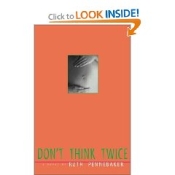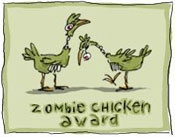In 2004, I took an office job again for the first time in 12 years. I noticed lots of things had happened in the interim — computers had gotten faster and I’d gotten slower, for example — but that really wasn’t that surprising.
What surprised me was Power Point. It was everywhere. You couldn’t give a presentation without using Power Point; if you did, that would show you weren’t a serious or important or prepared person.
The trouble was, to my untutored eye, Power Point usually detracted from a presentation. Often, it was simply a summary of what the speaker was saying. People looked from the speaker to her Power Point, then back again. Once those written words are in front of you, you can’t ignore them. Instead, you ignore the speaker.
Often, you already knew what a speaker was going to say before she said it. Which made everything seem trite by the time it was spoken. Like, say, you already knew it, having read it just seconds before. Time for some shut-eye.
Sometimes, with accomplished speakers, Power Point could actually improve their presentations — with illustrations or graphs or cartoons, for example, that couldn’t be described verbally. But that seemed to involve a level of thought many presenters simply didn’t take the time to explore. They were giving a talk, therefore, they had to have Power Point. Questions were never asked about why and how. Power Point had become a necessity and no one questioned it.
I worked in that office job for more than three years and had a good time. But then it was time to leave. So I have no idea what’s going on these days — although my husband, an academic, did tell me he recently created a minor furor by refusing to use Power Point for a presentation.
One day, when I reappear at my old workplace and renew friendships, I hope to hear a rumor. Power Point is dead, my old friends will tell me. Some kind of study indicated that people in the audience don’t learn nearly as much when you duplicate the information with Power Point and a talk. Yes, someday, studies will indicate this, I feel sure.
In the meantime, it might be wise just to bring someone in off the street who can look at all the new technological marvels you’re using at work. She might say, Wow, most of this stuff is great. But the emperor, you know, could use a new wardrobe when it comes to Power Point.
(Copyright 2009 by Ruth Pennebaker)















I hate powerpoint —
give me a hand-out and say
the words. Come on, folks!
http://www.thehaikudiaries.wordpress.com
I used to hate PowerPoint until I learned all of the amazing and magical things you can do with it. I had no idea that you could make things move and add video or audio or do all kinds of things with text and, basically, you can create beautiful works of art on it.
However, the need for such fancy tricks is very limited, as most people want to use it to just put words on the screen. Which is sad.
I worked for a company where the managers learned the bare minimum about PowerPoint and thought they were geniuses when they threw the slide show up the screen and read it to us, word for word. They actually didn’t have a clue what PowerPoint could really do.
I once lost a potential job due to … not knowing PowerPoint. So I hate it, too!
I just wish I knew enough about power point and stuff like that to hate it. I’m just in awe of all that kind of thing. (I know that’s a cop out. I’m too lazy to learn and so I plead incompetence due to old age.)